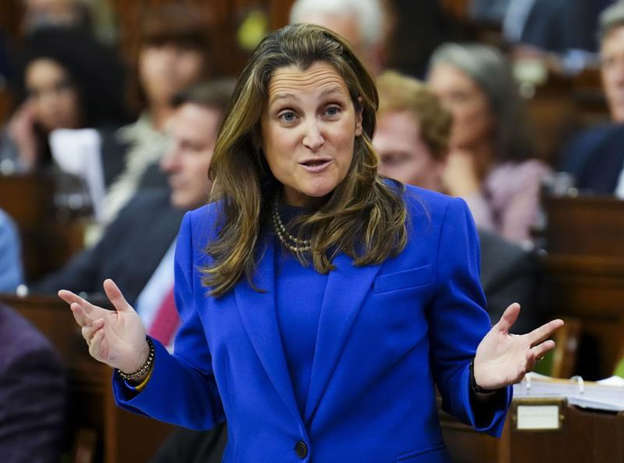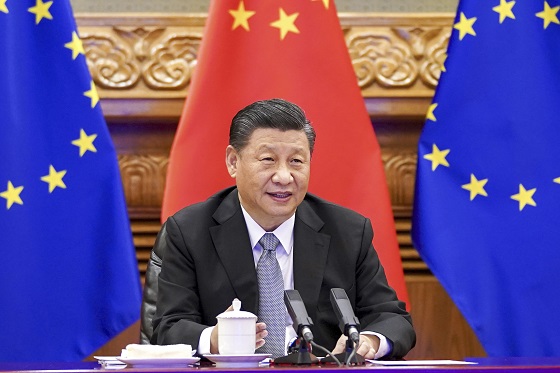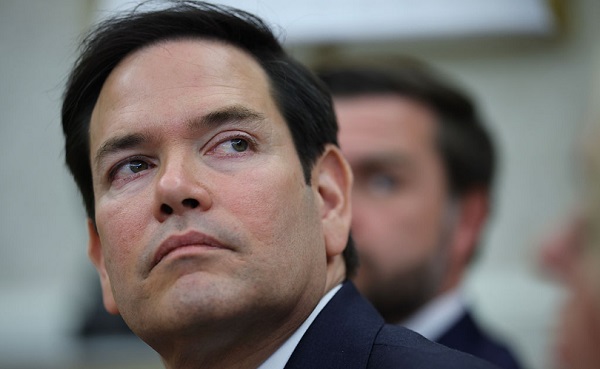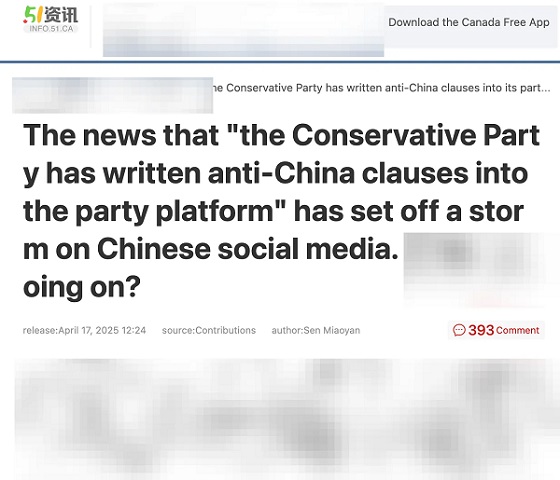Business
Public Accounts of Canada Report Buried on Last Day of Sitting Session

Trudeau Government Hides Exploding Deficit and Fiscal Mismanagement Amid Chaos and Distraction
Well, folks, here we go again. The Trudeau government—masterclass in obfuscation, fiscal recklessness, and zero accountability—just pulled off another slick political maneuver. This time, it’s the Public Accounts of Canada 2024, a document that should be front-page news, but this news bite is buried so deep in the news cycle you’d think it was radioactive.
Here’s what’s happening: the government dropped its final, audited financial statements for the fiscal year on the last day of the parliamentary sitting session, when no one’s watching. Why? Because it’s bad. Really bad. Let’s connect the dots.
First, we had the Fall Economic Statement released just yesterday, a forward-looking document that’s basically a glossy brochure for Trudeau’s latest spending spree. That’s what the media focused on. But the Public Accounts—that’s where you see the hard, cold truth: the deficit is exploding, hitting $61.9 billion, and Canada’s finances are way past the so-called “guardrails” Trudeau and Freeland promised us.
Let’s not forget, those guardrails were supposed to limit deficits to $40 billion, but Trudeau blew right past that, overspending by more than $20 billion. And now they’re scrambling to hide the numbers because they know Canadians will not tolerate this reckless fiscal mismanagement any longer.
Ah, yes, Chrystia Freeland—the “fiscally responsible” finance minister—who just resigned in the middle of this chaos. What are the odds? She’s out, claiming “irreconcilable differences” with Trudeau’s economic policies. Translation: she knew the books are in tatters, and she didn’t want her name on them when the inevitable reckoning comes.
Now ask yourself: if everything was fine, if Canada’s economy was strong and the government was keeping its promises, wouldn’t Trudeau and his pals want to shout this from the rooftops? Wouldn’t they want the opposition to read every page of those Public Accounts? Instead, they slid the report across the table on the last possible day—while the media was distracted, MPs were packing up, and Freeland was running for the hills.
This is the oldest trick in the book. When governments screw up, they don’t admit it. They bury the evidence, release it late, or throw out a flashy distraction. Trudeau just did all three in one week: the Fall Economic Statement, full of nice words but exposing Trudeau’s reckless spending; Chrystia Freeland’s resignation, a clear sign even she wanted no part of it; and Anita Anand quietly releasing the Public Accounts on the last day of the sitting session, hoping no one would notice as Trudeau’s crumbling leadership sucks up all the oxygen in the news cycle.
What’s in those Public Accounts that Trudeau doesn’t want you to see? Deficits far larger than what he promised? Ballooning spending on programs that are failing Canadians? Spiraling interest costs on our record-breaking debt? Likely all of the above.
Here’s the bottom line: Trudeau’s government has lost control of the country’s finances. They’re driving Canada into economic oblivion, and when the consequences hit, it won’t be politicians who pay the price. It’ll be hardworking Canadians—your taxes, your savings, your livelihoods.
And what does Trudeau do? He hides the truth, covers it up, and hopes you’re too distracted to care. This is what contempt for democracy looks like, and it’s a disgrace. Canadians deserve better.
That’s the real story here—Trudeau’s government has a deficit of trust, a deficit of competence, and now, a fiscal deficit so big it makes Freeland want to quit. You couldn’t make it up if you tried.
Stay tuned, folks, because this isn’t over. When the numbers come out, they’ll tell a story Trudeau can’t hide forever—and that story won’t be pretty.
What is the Public Accounts of Canada?
The Public Accounts of Canada is the official, audited financial report of the Government of Canada, providing a final and comprehensive overview of the federal government’s finances for the fiscal year, which runs from April 1 to March 31.
- This document is produced annually by the Receiver General for Canada and is audited by the Auditor General of Canada to ensure its accuracy, reliability, and adherence to public sector accounting standards.
- It includes detailed information about revenues, expenditures, deficits or surpluses, debt, and all financial activities of government departments, agencies, and Crown corporations.
The Public Accounts is a backward-looking document: it reports the final, audited numbers of what has already happened financially over the previous fiscal year.
How is it Different from the Fall Economic Statement?
The Fall Economic Statement is a forward-looking financial update presented by the government midway through the fiscal year, typically in November or December. It outlines the government’s current economic outlook, updates revenue and spending projections, and provides an estimate of deficits or surpluses for the upcoming years.
Key Differences Between the Public Accounts and the Fall Economic Statement
The Public Accounts of Canada and the Fall Economic Statement serve distinct purposes in the government’s financial reporting, primarily differing in their focus, timing, and level of scrutiny.
- Timeframe:
The Public Accounts are backward-looking, presenting the final, audited financial results for the previous fiscal year (April 1 to March 31). In contrast, the Fall Economic Statement is forward-looking, providing forecasts and plans for the current and upcoming fiscal years. - Purpose:
The Public Accounts offer a definitive and detailed overview of the government’s financial performance, focusing on accountability and transparency. It includes actual revenues, expenditures, deficits, and debt levels. Meanwhile, the Fall Economic Statement serves as a mid-year economic and fiscal update, often outlining new spending initiatives, policies, and projections for future budgets. - Audit Status:
A key distinction is that the Public Accounts are audited by the Auditor General of Canada. This means the numbers are verified and considered reliable. In contrast, the Fall Economic Statement consists of projections prepared by the Department of Finance and is not independently audited. - Content:
The Public Accounts present actual, finalized financial data, including where taxpayer money was spent, how much debt was accumulated, and whether the deficit or surplus matched previous promises. The Fall Economic Statement, however, focuses on estimates—projecting government spending, deficits, and economic growth into the future. - Timing:
Traditionally, the Public Accounts are tabled in the fall, typically between late September and October. This timing ensures that Parliament and the public have an opportunity to analyze the government’s financial performance before the year ends. The Fall Economic Statement, on the other hand, is released later in the fall, usually in November or December, as a political and economic update.
The Bottom Line
The Public Accounts of Canada is about facts and accountability, providing hard, audited numbers on what the government actually did with its finances. The Fall Economic Statement is about forecasts and priorities, giving Canadians a sense of where the government intends to go financially and politically. While both are important, only the Public Accounts holds the government accountable for its actual financial record.
Why it Matters
- The Public Accounts hold the government accountable for its actual spending and deficits. Because they are audited, these numbers are considered the final word on the government’s fiscal performance.
- The Fall Economic Statement, however, is a political document. It forecasts future spending, reflects policy priorities, and often contains new announcements or programs. While it gives an idea of where the government thinks finances are headed, it’s not final or independently audited.
Final Thoughts
The Public Accounts of Canada is a finalized, audited report that shows where the government’s money actually went—the truth, the real numbers, no spin, no glossy brochures. It’s the hard, cold record of how this government spent your hard-earned tax dollars. The Fall Economic Statement, by contrast, is just a wish list—a forward-looking document full of lofty promises, political spin, and projections that rarely match reality. One is about accountability. The other is about politics and promises.
Both matter, but only one tells Canadians the hard truth about the state of our country’s finances. And let’s be clear: this Public Accounts report isn’t going away. Come the next session, the Public Accounts Committee will be digging through every page of this government’s fiscal mismanagement. They’ll expose what Trudeau, Freeland, and now LeBlanc have done to this country’s finances—runaway deficits, bloated spending, mountains of debt our kids will have to pay off.
And where is the NDP in all this? They’ll criticize just enough to keep up appearances, but let’s not pretend they’re not part of the problem. They’ve traded your children’s future for a seat at Trudeau’s crumbling table. For what? A dental plan? A plan that sounds great on paper, but let’s face it: what good is getting your teeth cleaned when you can’t afford to put food on the table? What good is a government that pretends to care about affordability while driving this country further into debt?
Canadians deserve better than this. Our families, our children, and our seniors deserve better. This country was built on the promise of hard work, sacrifice, and the dream of a better life for the next generation. But that dream is being stolen—piece by piece—by a government with no respect for fiscal responsibility, no sense of accountability, and no real plan for the future. Instead, they’re mortgaging your kids’ future, spending money we don’t have on programs we can’t afford, all to cling to power a little longer.
This is about more than budgets and deficits. This is about Canada—about the values that built this country. We are a nation of workers, builders, and innovators. We are a people who believe in living within our means, taking responsibility for ourselves and our families, and handing something better to the next generation. That’s what makes Canada strong. And that’s what this government is destroying—recklessly, selfishly, and without shame.
Canadians are tired of the misplaced priorities. Tired of being told there’s no money for veterans, farmers, or small businesses while this government burns through billions on their pet projects and political handouts. Tired of watching their taxes go up, their cost of living skyrocket, and their dreams slip further and further out of reach.
It’s time to stop this madness. Canadians deserve a government that respects their sacrifices, lives within its means, and understands that every dollar it spends belongs to you—not them. This country is not Justin Trudeau’s personal playground. It’s your country. It’s our country. And it’s time to take it back.
We need an election. Canadians need to send a message to this government that enough is enough. We will not stand by while they gamble away our future. We will not let them bury the truth in backroom releases and holiday distractions. This is our Canada, and it’s time to fight for it. For our families, for our future, and for the country we love.
Support independent journalism by subscribing to The Opposition with Dan Knight .
For the full experience, upgrade your subscription.
Business
Is Government Inflation Reporting Accurate?


 David Clinton
David Clinton
Who ya gonna believe: official CPI figures or your lyin’ eyes?
Great news! We’ve brought inflation back under control and stuff is now only costing you 2.4 percent more than it did last year!
That’s more or less the message we’ve been hearing from governments over the past couple of years. And in fact, the official Statistics Canada consumer price index (CPI) numbers do show us that the “all-items” index in 2024 was only 2.4 percent higher than in 2023. Fantastic.
So why doesn’t it feel fantastic?
Well statistics are funny that way. When you’ve got lots of numbers, there are all kinds of ways to dress ‘em up before presenting them as an index (or chart). And there really is no one combination of adjustments and corrections that’s definitively “right”. So I’m sure Statistics Canada isn’t trying to misrepresent things.
But I’m also curious to test whether the CPI is truly representative of Canadians’ real financial experiences. My first attempt to create my own alternative “consumer price index”, involved Statistics Canada’s “Detailed household final consumption expenditure”. That table contains actual dollar figures for nation-wide spending on a wide range of consumer items. To represent the costs Canadian’s face when shopping for basics, I selected these nine categories:
- Food and non-alcoholic beverages
- Clothing and footwear
- Housing, water, electricity, gas and other fuels
- Major household appliances
- Pharmaceutical products and other medical products (except cannabis)
- Transport
- Communications
- University education
- Property insurance
I then took the fourth quarter (Q4) numbers for each of those categories for all the years between 2013 and 2024 and divided them by the total population of the country for each year. That gave me an accurate picture of per capita spending on core cost-of-living items.
Overall, living and breathing through Q4 2013 would have cost the average Canadian $4,356.38 (or $17,425.52 for a full year). Spending for those same categories in Q4 2024, however, cost us $6,266.48 – a 43.85 percent increase.
By contrast, the official CPI over those years rose only 31.03 percent. That’s quite the difference. Here’s how the year-over-year changes in CPI inflation vs actual spending inflation compare:
As you can see, with the exception of 2020 (when COVID left us with nothing to buy), the official inflation number was consistently and significantly lower than actual spending. And, in the case of 2021, it was more than double.
Since 2023, the items with the largest price growth were university education (57.46 percent), major household appliances (52.67 percent), and housing, water, electricity, gas, and other fuels (50.79).
Having said all that, you could justifiably argue that the true cost of living hasn’t really gone up that much, but that at least part of the increase in spending is due to a growing taste for luxury items and high volume consumption. I can’t put a precise number on that influence, but I suspect it’s not trivial.
Since data on spending doesn’t seem to be the best measure of inflation, perhaps I could build my own basket of costs and compare those numbers to the official CPI. To do that, I collected average monthly costs for gasoline, home rentals, a selection of 14 core grocery items, and taxes paid by the average Canadian homeowner.¹ I calculated the tax burden (federal, provincial, property, and consumption) using the average of the estimates of two AI models.
How did the inflation represented by my custom basket compare with the official CPI? Well between 2017 and 2024, the Statistics Canada’s CPI grew by 23.39 percent. Over that same time, the monthly cost of my basket grew from $4,514.74 to $5,665.18; a difference of 25.48 percent. That’s not nearly as dramatic a difference as we saw when we measured spending, but it’s not negligible either.
The very fact that the government makes all this data freely available to us is evidence that they’re not out to hide the truth. But it can’t hurt to keep an active and independent eye on them, too.
Subscribe to The Audit.
For the full experience, upgrade your subscription.
2025 Federal Election
Carney’s Hidden Climate Finance Agenda

From Energy Now
By Tammy Nemeth and Ron Wallace
It is high time that Canadians discuss and understand Mark Carney’s avowed plan to re-align capital with global Net Zero goals.
Mark Carney’s economic vision for Canada, one that spans energy, housing and defence, rests on an unspoken, largely undisclosed, linchpin: Climate Finance – one that promises a Net Zero future for Canada but which masks a radical economic overhaul.
Regrettably, Carney’s potential approach to a Net Zero future remains largely unexamined in this election. As the former chair of the Glasgow Financial Alliance for Net Zero (GFANZ), Carney has proposed new policies, offices, agencies, and bureaus required to achieve these goals.. Pieced together from his presentations, discussions, testimonies and book, Carney’s approach to climate finance appears to have four pillars: mandatory climate disclosures, mandatory transition plans, centralized data sharing via the United Nations’ Net Zero Data Public Utility (NZDPU) and compliance with voluntary carbon markets (VCMs). There are serious issues for Canada’s economy if these principles were to form the core values for policies under a potential Liberal government.
About the first pillar Carney has been unequivocal: “Achieving net zero requires a whole economy transition.” This would require a restructuring energy and financial systems to shift away from fossil fuels to renewable energy with Carney insisting repeatedly in his book that “every financial [and business] decision takes climate change into account.” Climate finance, unlike broader sustainable finance with its Environmental, Social, and Governance (ESG) focus would channel capital into sectors aligned with a 2050 Net Zero trajectory. Carney states: “Companies, and those who invest in them…who are part of the solution, will be rewarded. Those lagging behind…will be punished.” In other words, capital would flow to compliant firms but be withheld from so-called “high emitters”.
How will investors, banks and insurers distinguish solution from problem? Mandatory climate disclosures, aligned with the International Sustainability Standards Board (ISSB), would compel firms to report emissions and outline their Net Zero strategies. Canada’s Sustainability Standards Board has adopted these methodologies, despite concerns they would disadvantage Canadian businesses. Here, Carney repeatedly emphasizes disclosures as the cornerstone to track emissions data required to shift capital away from “high emitters”. Without this, he claims, large institutional investors lack the data on supply chains to make informed decisions to shift capital to businesses that are Net Zero compliant.
The second pillar, Mandatory Transition Plans would require companies to map a 2050 Net Zero trajectory for emission reduction targets. Failure to meet those targets would invite pressure from investors, banks, or activists, who may pursue litigation for non-compliance. The UK’s Transition Plan Task Force, now part of ISSB, provides this standardized framework. Carney, while at GFANZ, advocated using transition plans for a “managed phase-out” of high-emitting assets like coal, oil and gas, not just through divestment but by financing emissions reductions. “As part of their transition planning, [GFANZ] members should establish and apply financing policies to phase out and align carbon-intensive sectors and activities, such as thermal coal, oil and gas and deforestation, not only through asset divestment but also through transition finance that reduces real world emissions. To assist with these efforts GFANZ will continue to develop and implement a framework for the Managed Phase-out of high-emitting assets.” Clearly, the purpose of this is to ensure companies either decarbonize or face capital withdrawal.
The third pillar is the United Nations’ Net Zero Data Public Utility (NZDPU), a centralized platform for emissions and transition data. Carney insists these data be freely accessible, enabling investors, banks and insurers to judge companies’ progress to Net Zero. As Carney noted in 2021: “Private finance is judging…banks, pension funds and asset managers have to show where they are in the transition to Net Zero.” Hence, compliant firms would receive investment; laggards would face divestment.
Finally, voluntary carbon markets (VCMs) allow companies to offset emissions by purchasing credits from projects like reforestation. Carney, who launched the Taskforce on Scaling VCMs in 2020, has insisted on monitoring, verification and lifecycle tracking. At a 2024 Beijing conference, he suggested major jurisdictions could establish VCMs by COP 30 (planned for 2025 in Brazil) to create a global market. If Canada mandates VCMs, businesses especially small and medium enterprises (SMEs) would face much higher compliance costs with credits available only to those that demonstrate progress with transition plans.
These potential mandatory disclosures and transition plans would burden Canadian businesses with material costs and legal risks that constitute an economic gamble which few may recognize but all should weigh. Do Canadians truly want a government that has an undisclosed climate finance agenda that would be subservient to an opaque globalized Net Zero agenda?
Tammy Nemeth is a U.K.-based strategic energy analyst. Ron Wallace is an executive fellow of the Canadian Global Affairs Institute and the Canada West Foundation.
-

 2025 Federal Election11 hours ago
2025 Federal Election11 hours agoStudy links B.C.’s drug policies to more overdoses, but researchers urge caution
-

 2025 Federal Election1 day ago
2025 Federal Election1 day agoPolice Associations Endorse Conservatives. Poilievre Will Shut Down Tent Cities
-

 Alberta1 day ago
Alberta1 day agoRed Deer Justice Centre Grand Opening: Building access to justice for Albertans
-

 Business1 day ago
Business1 day agoTrump: China’s tariffs to “come down substantially” after negotiations with Xi
-

 conflict1 day ago
conflict1 day agoMarco Rubio says US could soon ‘move on’ from Ukraine conflict: ‘This is not our war’
-

 Business1 day ago
Business1 day agoChinese firm unveils palm-based biometric ID payments, sparking fresh privacy concerns
-

 2025 Federal Election2 days ago
2025 Federal Election2 days agoMark Carney Wants You to Forget He Clearly Opposes the Development and Export of Canada’s Natural Resources
-

 Environment21 hours ago
Environment21 hours agoExperiments to dim sunlight will soon be approved by UK government: report








